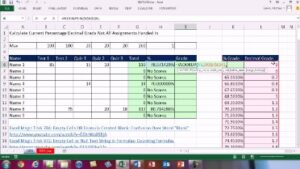
The article was reviewed, fact-checked and edited by our editorial staff prior to publication.
Accounting Calculators
The bank reconciliation confirms that the accounts in the general ledger are complete, accurate and most of all consistent with the bank statements. Discrepancies at some level could be tolerable as they occur due to the timing of payments and deposits. Doing bank reconciliations regularly helps companies control their financial transactions and easily track errors and omissions. A bank reconciliation statement should be completed monthly but can even be done weekly if your company processes a large number of transactions. Bank reconciliation statements can help identify accounting errors, discrepancies and fraud.
- You can get a template online to use for your bank reconciliation statement, or you can use a spreadsheet.
- For accuracy and effective cash management, you should prepare a bank reconciliation statement monthly.
- As you navigate through the complexities of bank reconciliation, our ‘Bank Reconciliation Calculator’ ensures to prioritize your data security.
- In this bank reconciliation calculator enter the balances, total deposits and total withdrawals and submit to know the result.
Account Reconciliation Tips & Advice
After you’ve received bank statements, establish the last reconciled transaction from the previous period and begin there. Search the bank statement for any interest your account earned during the month, then add it to your reconciliation statement. Also, deduct any penalties or fees the bank assessed that your ledger doesn’t list. This is a simple data entry error that occurs when two digits are accidentally reversed (transposed) when posting a transaction. For example, you wrote a check for $32, but you recorded it as $23 in your accounting software. If balance sheet: assets liabilities equity not, you’re most likely looking at an error in your books (or a bank error, which is less likely but possible).
Can Balance Brought Forward Be Negative?
When performing a bank reconciliation, you’ll need to consult your business records, goodwill overview examples how goodwill is calculated check register, and receipts to account for any transactions not recorded in the bank statement. These source documents are essential to reconciliation and should be maintained in binders or electronically. Check your ledger’s recorded deposits, withdrawals and cleared checks against those listed on the bank statement. Everything listed on the bank statement should be included in your records and vice versa. Before sitting down to reconcile your business and bank records, gather your company ledger and the current and previous bank statements.

For example, if you ordered a wire transfer or stopped payment on a check, your bank may have charged fees for this. Similarly, any interest payments you earned will only be reflected in the bank statement and not your business’s general ledger at the end of the month. If your beginning balance in your accounting software isn’t correct, the bank account won’t reconcile.
As you enter the information, any deposits you’ve made that haven’t showed on your account balance will be added automatically. The unaccounted discrepancies are a sign of inaccurate accounting practices or perhaps warning of fraudulent transactions. It is a good idea to perform reconciliation at the end of every quarter or at least a year. Finally, press RECONCILE, and you’ll be provided with an adjusted ending balance for your checking account. If you’d like, click “Printer Friendly Report,” and a new browser window will open. After you have compared the deposits and withdrawals, determine any missing transactions.
The ending balance on the business’s bank statement and its book balance are almost never exactly the same, so you typically need to adjust the book balance to understanding variable cost vs fixed cost conform to the bank statement. The purpose of performing a bank reconciliation is to find and understand these discrepancies. After all adjustments are made, the balance on a bank reconciliation statement should equal the ending balance of the bank account. After reviewing all deposits and withdrawals, adjusting the cash balance and accounting for interest and fees, your ledger’s ending balance should match the bank statement balance.
It helps you effortlessly compare your bank statement with your financial records, ensuring accurate accounting. The calculator takes over the complexities, providing you with precise results. The goal of the bank reconciliation process is to ensure that the company’s records match the bank’s records.






